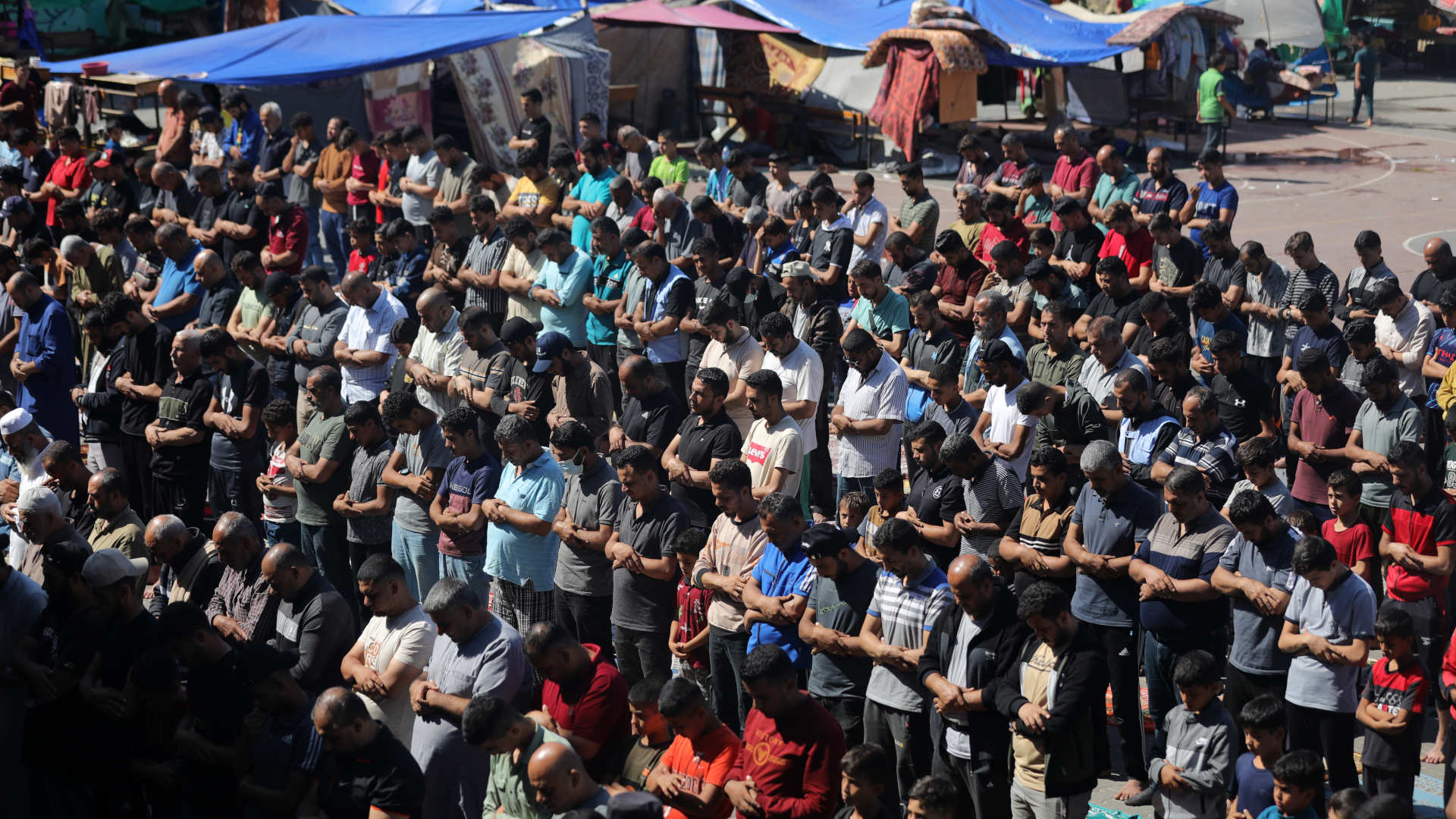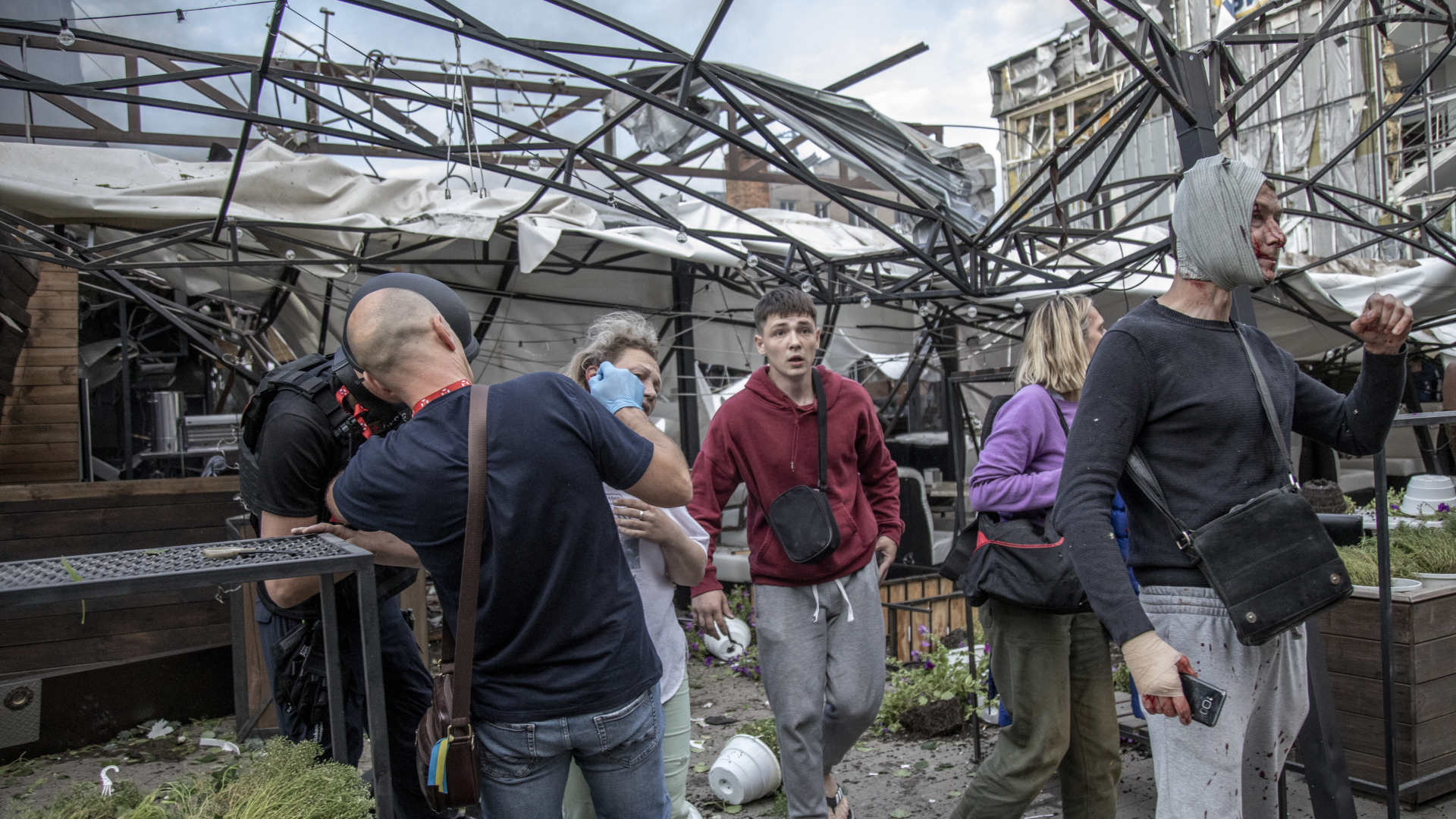Repeated Israeli bombardments and blockades of humanitarian aid have starved and deprived the citizens of Gaza of water, food, electricity, and medicine. More than 25,000 Palestinians have been killed, with about 40 percent of them children, since violence escalated in October. Residents of Gaza have been displaced before: When Israel was founded in 1948, Zionist forces drove more than 700,000 Palestinians from their homes. And in 1967, the Israeli military forced a new wave of refugees to flee to camps in the West Bank and Gaza. During the current crisis, up to 1.9 million people — 85 percent of Gaza’s residents — have had to leave their homes, though the exact figure is difficult to estimate. As I write, the International Court of Justice is hearing arguments as to whether Israel is committing a genocide in Gaza. What do such traumatizing experiences do to a human being?
As a molecular biologist, I have been interested in understanding and exploring how traumatic experiences can have an impact at multiple levels: mentally, physiologically, genetically, and within the wider society. In 2014, my research led me to work with multiple scholars and scientists to study Syrian refugees who had fled to Jordan in the 1980s as a result of the oppressive regime, and then later in a second wave in 2011. We measured cortisol levels as a biomarker of stress and tested for variants of genes related to response to trauma. Our latest work, currently under review, looks at epigenetic changes among three generations of these refugees. These changes affect not the sequence of genes, but the way they turn on and off. What the results will mean is too early to tell, but broadly, our work is beginning to show that a particular epigenetic pattern of trauma can be inherited . (Among our scientific collaborators within Rights for Time, an interdisciplinary research network, is the Palestine Trauma Center, whose clinic in Deir al-Balah, Gaza, was severely damaged by an explosion.)
What we have come to realize is that trauma is continuous and not a single, discrete event. Its impacts flow into each other across a person’s lifetime and can move forward to the next generation. This is important when trying to understand trauma’s impact and how to reverse the negative effects. In the Middle East, a compassionate, fluid understanding of mental health is not new. What may have been the first hospital for the mentally ill was built in Baghdad in 705 A.D. where historical accounts suggested that patients were treated with respect, dignity, and love.
We can see another manifestation of this positive framework in how displaced people have been dealt with in the past versus today. The work of social anthropologist Dawn Chatty at the University of Oxford, which she described at a 2022 conference, shows how people in the region shared and respected differences without forcing integration. People from different faiths lived together side by side. Before the United Nations made a Universal Declaration of Human Rights, other ethical frameworks existed.
Within a modern Western framework, in my experience the impact of trauma is perceived as negative. But evolutionary history has shown that humans flourish and survive despite continuous trauma. What evolved to help us deal with it is religion and spirituality. In Palestinian and Syrian refugees living in Jordan, faith helps people to cope, endure, and ultimately flourish. Unfortunately, I have found that most scientists and scholars of the World Health Organization and other agencies don’t take faith into consideration when designing programs to help refugees recover from trauma.
I find this strange because as scientists, we should study all phenomena regardless of our inner prejudices, which in this case can blind us to reality. As a result of this disregard, international nongovernmental organizations do not integrate faith and Indigenous practice into interventions delivered to alleviate stress among refugee populations. On the contrary, refugees indirectly are denied accessing their faith as a legitimate way to deal with trauma. Instead, they are asked in some cases to learn Brazilian dance, as Syrian refugees in the Za’atari refugee camp in Jordan told me. The ramifications are an emphasis on victimhood, a loss of identity, boosting of a savior complex on behalf of the agency, and propagation of a colonizing rhetoric — not to mention a lack of sustainability.
What we have come to realize is that trauma is continuous and not a single, discrete event. Its impacts flow into each other across a person’s lifetime and can move forward to the next generation.
What can be done? Involving local scientists to conduct the research who know the local culture and respect the local traditions and practices. Trusting local people to know their problems and how to solve them within their own context. Engagement of all partners on an equal footing with no hierarchy. The U.N. resolution, “Promoting the Social and Solidarity Economy for Sustainable Development,” that was adopted in April of last year ensures a legal framework for this kind of local engagement.
More thoughtful interventions rooted in science could have a benefit. My colleagues and I are now doing a randomized controlled trial to assess the ability of a reading-based program to reverse epigenetic signatures of trauma. We know that in mice, such reversals are possible.
But ultimately, it goes back to the human being, each of whom is unique because of their DNA and therefore has something amazing to share. With human diversity, we have enough variation to create a world where everyone is respected and trusted.
Rana Dajani is a professor of molecular biology at the Hashemite University in Jordan and currently the Richard von Weizsäcker Fellow at the Robert Bosch Academy in Germany.












Cultural respect is only achievable if people also learn about their own bias and how it colors their viewpoints. The most difficult part of science. And religion IS the largest bias that exists; the indoctrination of children who don’t have full reasoning skills yet, at its core. The trauma religion, especially the organized Judaeo-Christian variants monopolizing humanity for the last 2000 years, has caused upon humanity is the absolute largest kind of damage caused in humanities history. Because it takes religion for good people to do evil upon others by its manipulators behind the scenes. The unashamed egotistical self-centered conceit of religious adherents is minuscule compared to the actual size and scale of the universe our tiny planet exists in. Their anthropomorphic ‘god’ is puny in comparison. And its adherents rightfully mocked for their continued WILLFUL IGNORANCE in the face of humanities easily accessible combined knowledge-base. Religion is child abuse, period, it and its perpetrators deserve NO respect.
Alas, the wars in 1948 and 1967 were brutal and terrifying for both sides, and both were started by possibly genocidal Arab forces, not by the Israelis. That does not mitigate the horror of the experiences of refugees, the mostly innocent victims of these wars, but I don’t think it is reasonable to characterize it simply as “Zionist” aggression. The current conflict reflects not just the criminal unwillingness of the Israeli government to seek resolution, but the criminality is shared by such forces as Hamas and Hezbollah. The horrifying attack by Hamas led fairly predictably to the incredible (and inhumane) devastation wrought by the Israelis, and revealed how many resources were invested by Hamas in military structures, that could have been better invested in the people of Gaza.
I am not ignoring your important and interesting point, but if Islam is identified only with terrorist organizations, then only more trauma can result, and the wisdom of the Prophet will fail to help the people of Gaza in their suffering.
Thank you for your insight. True, nonjudgmental, religious or spiritual practices, in my experiences, have been integral in my healing. Unfortunately spiritual practices are too deep to measure. And maybe that mystery just has to be unquantifiable for man-made science.
For now. Maybe your biology knowledge can mix with your spiritual practice and the answers will come.. Who knows?